The Katyn massacre is one of the most tragic events in the Polish history of the 20th century. Many aspects of this unlawful retaliation against the captured Polish soldiers have not been fully explained to date. Do we know at least all the victims of the Soviet massacre?
The decision to murder the Polish prisoners of war held in the USSR was made on 5 March 1940 by a resolution of the Political Bureau of the Central Committee of the VKP (b). On March 14, in the office of Bogdan Kobułow, the head of the NKVD Main Economic Board, a meeting of the people responsible for its implementation took place. It was attended, among others, by the heads of the NKVD boards of the Kharkiv, Kalinin and Smolensk oblasts as well as the heads of the commandant departments of the abovementioned oblasts.
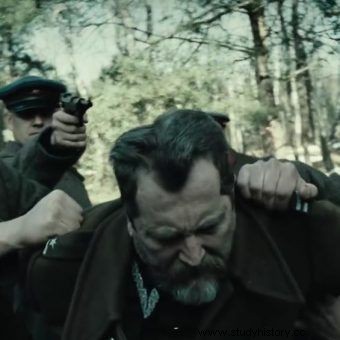
In the spring of 1940, the Soviets murdered representatives of the Polish elite. The photo shows a frame from Andrzej Wajda's film "Katyń".
A little over a week later, on March 22, 1940, Lavrenty Beria issued a secret order numbered 00350 "On the discharge of the NKVD prisons of the USSR and the BSSR." Based on it, at the beginning of April, the first transport from the Kozelsk camp set off to Katyn. Polish prisoners of war were deported according to disposition letters sent from Moscow. On their basis, convoys were prepared, which reached the places of execution in various ways (on foot, by prison cars, by train). In the spring of 1940, at least 21,768 Polish citizens were shot and killed, including over 10,000 army and police officers.
Kozielsk - Katyn
The Kozielsk camp was located less than 250 kilometers from Smolensk. It was located in the buildings of the Optina monastery. Soviet authorities more than once used religious sites for similar purposes. They took them over as part of the so-called "intensive secularization" that lasted in the 1920s and 1930s. In this case, the prisoners of war were placed in former monastery buildings and churches. The commandant of the camp was the senior lieutenant of the NKVD, Vasily N. Korolev.
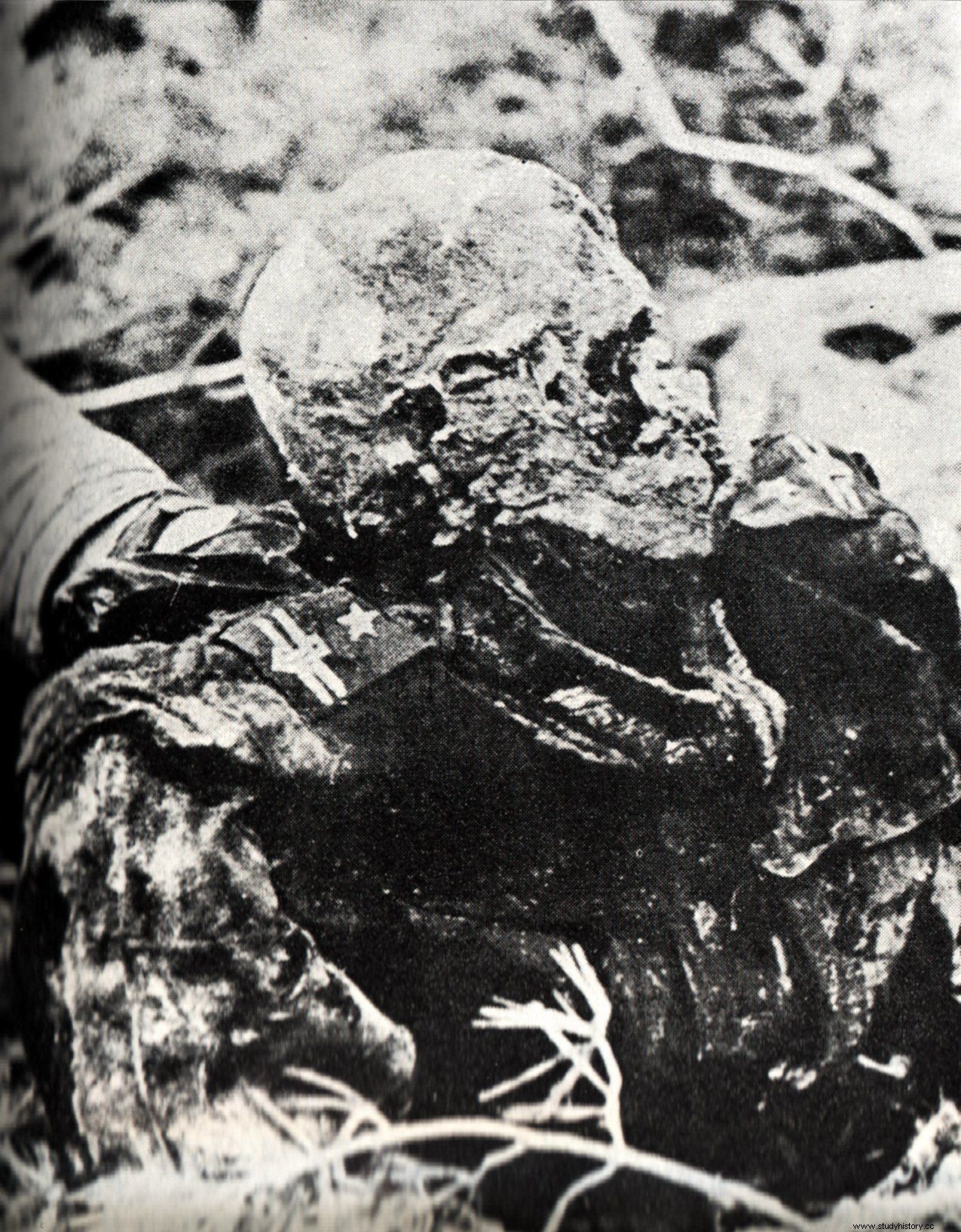
The body of Major Adam Solski murdered in Katyn in the photo taken during the exhumation in the spring of 1943.
Polish soldiers brought up in independence traditions were imprisoned in Kozelsk. Their increased activity meant that the Soviet authorities considered them their greatest enemies. NKVD officers interrogated the prisoners, wanting to obtain from them, in particular, information about their participation in the Polish-Bolshevik war of 1920. Attempts were also made to indoctrinate them. However, they did not bring the desired effects, which accelerated the decision to eliminate the recalcitrant prisoners.
When the liquidation of the camp began on April 3, 1940, it housed the elite of the Polish army and nation, including 4 generals, 1 rear admiral, about 100 colonels and lieutenant colonels. About 300 majors, 1,000 captain and captains, 2,500 second lieutenants and lieutenants, and 500 cadets were held there. The officer cadre also included about 200 airmen and 50 sailors.
Half of them were reserve officers. They were, among others, military and civilian doctors, prosecutors, judges, engineers, professors and university teachers. But not only. There were also journalists, artists, sportsmen, government officials, industrialists, landowners, merchants in the camp ...
From Kozielsk, a railway depot transported groups of prisoners of war to the vicinity of Smolensk, to the Gniezdowo station. In the nearby Katyn Forest, on the territory of the NKVD holiday resort, pits were dug in the ground. They were so deep that a truck could easily fit in them. Polish officers were transported from Gniezdów to the place of execution - the Kozie Góra wilderness - by a prison bus. They were murdered with a shot to the back of the head from a short distance. Previously, their hands were tied with hemp rope on their backs and military coats were thrown over their heads. Some were pierced with a bayonet.
Historians assume that some of the soldiers were murdered in the Oblast NKVD Board in Smolensk. Among others, generals Bronisław Bohatyrewicz, Mieczysław Smorawiński and Henryk Minkiewicz died here. The victims of the Soviet crime also fell to the Chief Rabbi of the Polish Army, Major Baruch Steinberg, and the Chief Chaplain of the Orthodox Church of the Polish Army, Lieutenant Colonel Szymon Fedorońko.
About 4,410 prisoners of war from the Kozielsk camp were killed in Katyn. Export groups, consisting of 50 to 344 people, were organized from April 3 to May 12, 1940. Only 245 officers, who were in the transports from April 26 and May 12, survived the camp. They were sent to the Pawliszczew Bór camp, and later transported to Griazowiec.

Janina Lewandowska was the only woman murdered in Katyn.
A woman, Janina Antonina Lewandowska, born on April 22, 1908, was also murdered in Katyn. She was a pilot, posthumously promoted to the rank of lieutenant. It was in the transport from April 20. She died a day or two later. Her story inspires today, as evidenced by the latest book by Maria Nurowska, Diary found in Katyn.
Ostaszków - Tver
The Ostashkov camp was located in the buildings of the former Nile Desert Monastery, on the island of Lake Seliger. The head of the camp was Major Pawieł Borisowiec from the NKVD. It was larger than the camps in Katyn and Starobelsk. It was mainly used by officers of the State Police, soldiers of the Border Protection Corps, as well as officers and non-commissioned officers of the military gendarmerie.
Some of the prisoners were also officers of the prison service, Border Guard, and intelligence and counterintelligence. In addition, lawyers, clergy, and land and military settlers from the eastern parts of the Second Polish Republic were kept in Ostashkov.

NKVD victims were murdered with a shot to the back of the head.
The liquidation of the camp, started on April 3, just like in Katyn, lasted until May 19, 1940. About 6,500 people were murdered during this time. An officer of the NKVD headquarters, Vasily Blokhin, watched over the smooth running of the operation. Transports of prisoners of war reached the Soroga railway station, from where they were taken by train to Kalinin (Tver). There, the Poles waited in the local prison until dusk. Their cells were in the basement.
The final act of the drama took place after dark. Prisoners were handcuffed and, after identification, were taken to a room where they were killed with a single shot to the back of the head. In the morning, the bodies were transported by trucks to the forest on the Tver River. Nearby, in the village of Jamok near Miednoje, there was an NKVD holiday center. The bodies were thrown randomly into previously dug pits and covered with earth.
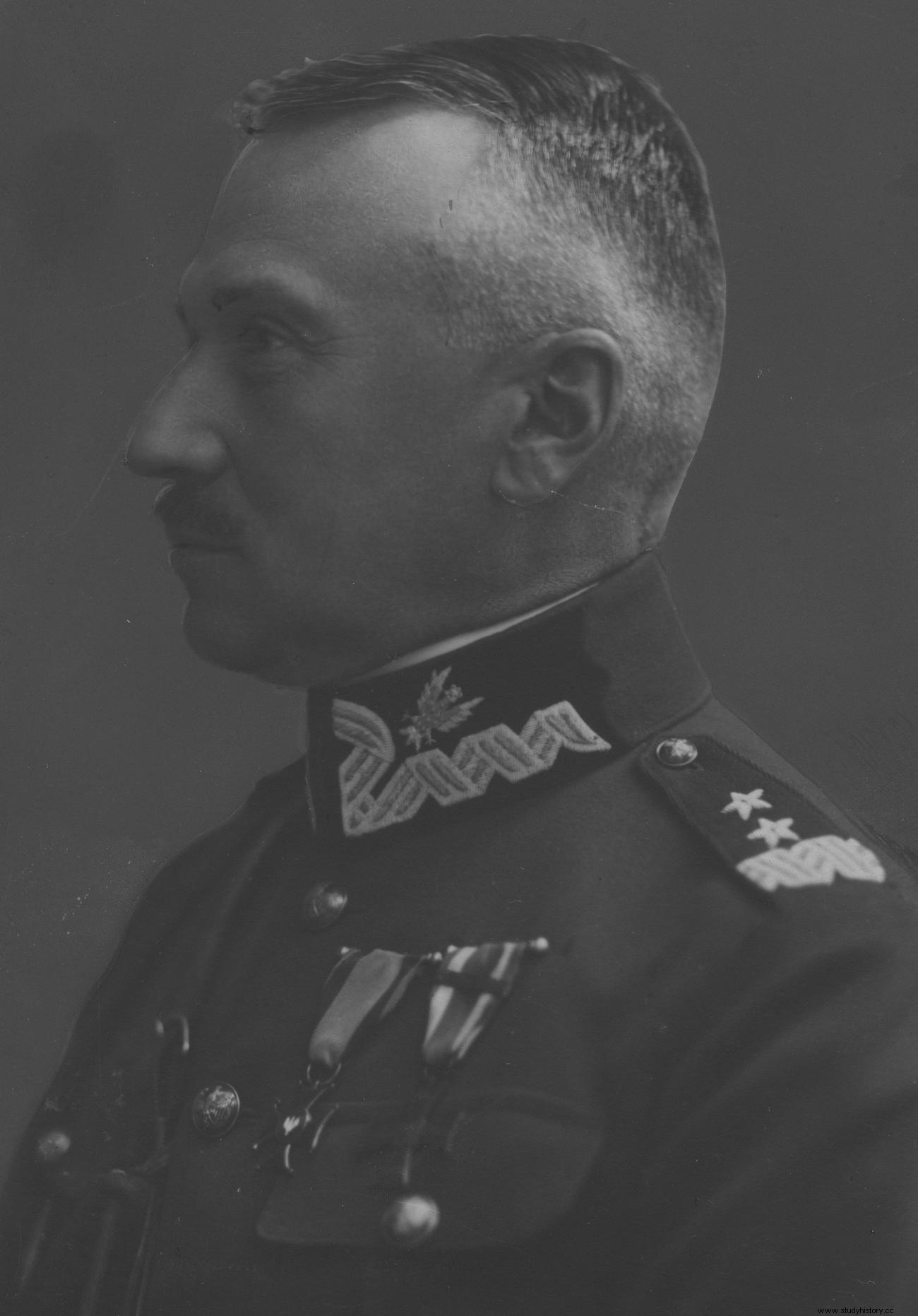
General Stanisław Haller, among others, died in Ostaszków.
In Ostaszków, among others, generals Leon Billewicz, Stanisław Haller, Franciszek Sikorski and Kazimierz Orlik-Łukoski were killed. Death met there also Deputy State Police Commissioner Zygmunt Pampuch. Only 127 prisoners of war survived, later transported to Pawliszczew Bór.
Starobelsk - Kharkiv
Another camp where Polish prisoners of war were held was established in Starobelsk, on the territory of an Orthodox monastery surrounded by a wall. Its commander was NKVD captain Alexei Berezhkov. About 4,000 professional officers and reserves were imprisoned there. Half of them were the officers taken prisoner after the capitulation of Lviv.
On the day of the liquidation of the camp, i.e. April 5, 1940, 8 generals, about 150 lieutenant-colonels and colonels, about 2,450 second lieutenants and lieutenants, and 52 civilians were in Starobelsk. Some of the inmates were also professors, academic lecturers, military and civilian doctors, engineers, teachers of secondary and common schools, as well as writers, poets, journalists, and political and social activists.
The prisoners were transported by train to Kharkiv, about 230 kilometers away, to the South Railway Station. Then they were transported to prison by buses. There, in the basement, they were shot to the back of the head - just like in Tver. After the executions, the bodies were transported by trucks to the Piatichatki estate, 8 kilometers from the city center. From cars they were thrown directly into previously prepared pits.
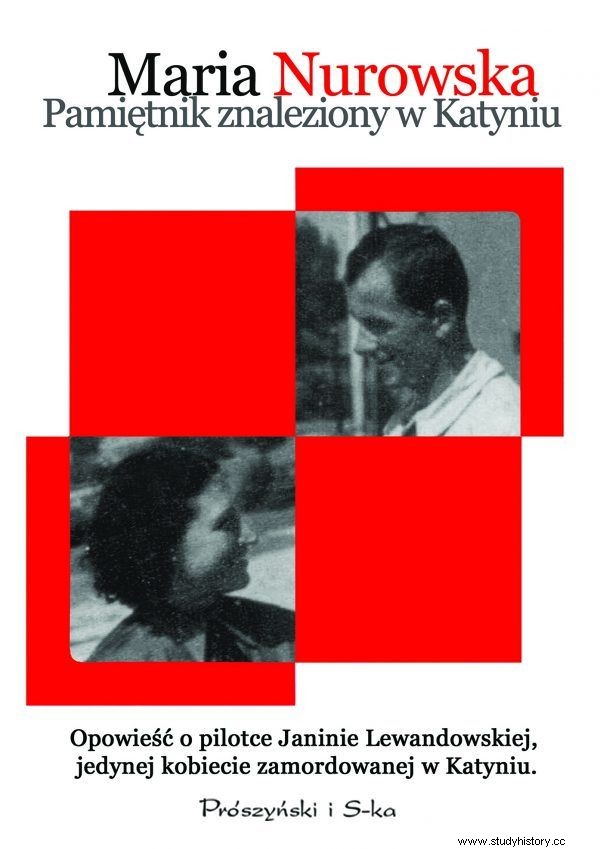
The article was inspired by the book by Maria Nurowska entitled "Diary found in Katyn" (Prószyński i S-ka 2018).
One of the victims of the Kharkiv crime was the head of the primary school in Bakałarzewo, lieutenant of the Polish Army reserve, Kazimierz Bogusławski. Also killed here were second lieutenant of the Polish Army cavalry reserve, Tom Kowalski, a lawyer and architect, and the head of the Department of Surgery at the Ujazdowski Hospital in Warsaw, Major of the Polish Army Reserve, Michał Leoszko. From among those imprisoned in Starobelsk, only 79 survived, who later ended up in Griazowiec.
Executions of civilians
The Soviets murdered not only the military. Unfortunately, still little is known about the executions of civilians . They were transported from prisons on Polish territory to prisons in Belarus (Minsk) and Ukraine (Kiev, Kherson and Kharkiv). The executions took place there.
The names of Polish citizens murdered by the NKVD in Ukraine are collected by the Ukrainian Katyn List. Contains 3435 items. On November 25, 1940, the head of the 1st Special Department of the NKVD of the USSR, the senior state security lieutenant Fyodor Tsvetukhin, sent her to the major of state security of the 1st Special Department of the USSR, Leonid Bashtakov.
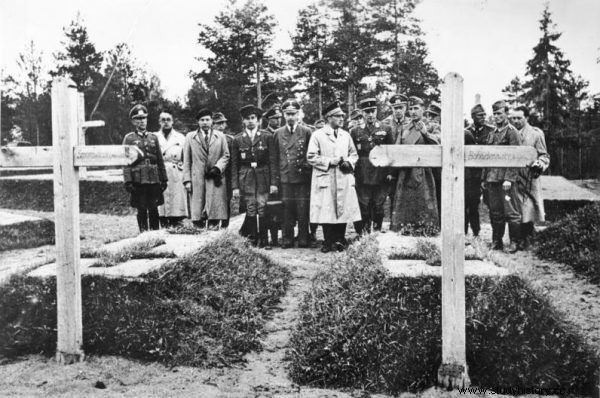
The graves of Polish generals murdered in Katyn were heaped up after the exhumation in 1943.
The list includes landowners, teachers, engineers, doctors, lawyers, old people, presidents, mayors and deputies, among others. There are also citizens of the Second Polish Republic of Ukrainian and Jewish nationality. Probably these people were buried in Bykivnia, a village near Kiev.
It's hard to believe that for half a century no one knew about their murder. As early as 1941, it was guessed that something bad had happened to thousands of Polish officers. In 1943, when the first graves in Katyn were discovered, no one hoped that the others survived. Today we know that apart from them, the Soviets also murdered a total of 7,500 civilians. This was less than originally assumed by the Politburo, which sentenced 11,000 to death . We do not know half of their names - they are people shot in Minsk, Belarus.
Belarusian Katyn List
The list of Polish victims of the crimes committed by the NKVD in Belarus is one of the greatest mysteries of the Katyn massacre. It contains the names of 3,870 citizens. The final decision to murder them was made by the Special College of the NKVD, consisting of Vsevolod Merkulov, Leonid Basztakov and Bogdan Kobułow.

Mass grave of Polish officers murdered in Katyn.
According to the researchers, two copies of this list were created. One was sent to the archives of the 1st Special Department of the NKVD in the USSR in Moscow, the second most likely remained in the archives of the NKVD of the BSSR in Minsk. Unfortunately, the fate of these documents is unknown. The place where the victims were buried has not been found to this day. Historians suspect that they may have been Kuropaty near Minsk.
The Katyn massacre is one of the key memorial sites in contemporary Polish national consciousness. Her memory survived the times of the Polish People's Republic despite the omnipresent lies. Also today, it is the duty of the state to ensure that those who gave their lives in the service of the Homeland are not forgotten.
Inspiration:
The article was inspired by the book by Maria Nurowska entitled Diary found in Katyn , Prószyński i S-ka 2018.
